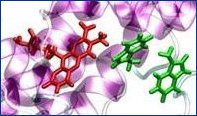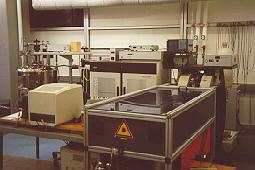EPR Spectroscopy (ESR 2)
Methods IPC, Weber
| EPR Sepctroscopy (ESR 2) | Model: | Bruker ESP380E |
| Unit and Room: | Physical Chemistry, 5th floor, R. 503b | |
| Responsible: | Thomas Berthold | |
| Electron Paramagentic Resonance (EPR) | Further information: | http://www.physchem.uni-freiburg.de/ akweber/forschung/eprfolder/ index.html |
| Short Description: Continous-wave EPR-Spectrometer operating at X-band (9–10 GHz) and Q-band (34–36 GHz) microwave frequencies. | Picture of the Equipment | |
| Available Experiments/Techniques: continuous-wave EPR, including transient EPR (TREPR) | ||
| Special Equipment: Low temperature unit (cryostat/resonator) for temperature range from 5 to 300 K. | ||
| Measurements on the equipment are currently done by: | Students after extensive training Trained scientific service personal | |
| Recent Publications, where this instrument was important (citation): | Angew. Chem. Int. Ed. 48 (2009) 404–407 | |
| Typical problems that may be solved with this instrument: | – identification of radicals – electronic structure determination of paramagnetic centers (organic radicals, transition metal ions, defect centers, optically excited states (triplets, radical pairs)) – measurement of short-lived (>10 ns) paramagnetic intermediate states (triplet states, spin-polarized radical-pair states) | |
![]() EPR Spectroscopy (ESR 2) (this page as a pdf file)
EPR Spectroscopy (ESR 2) (this page as a pdf file)


